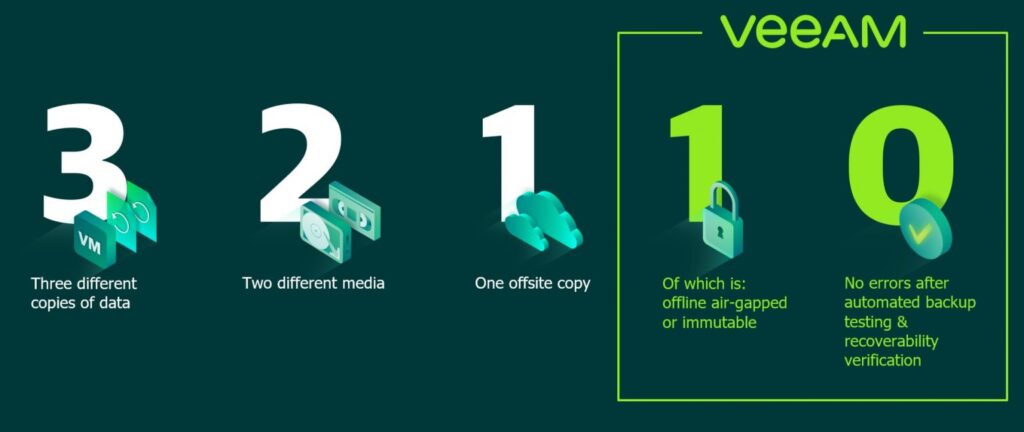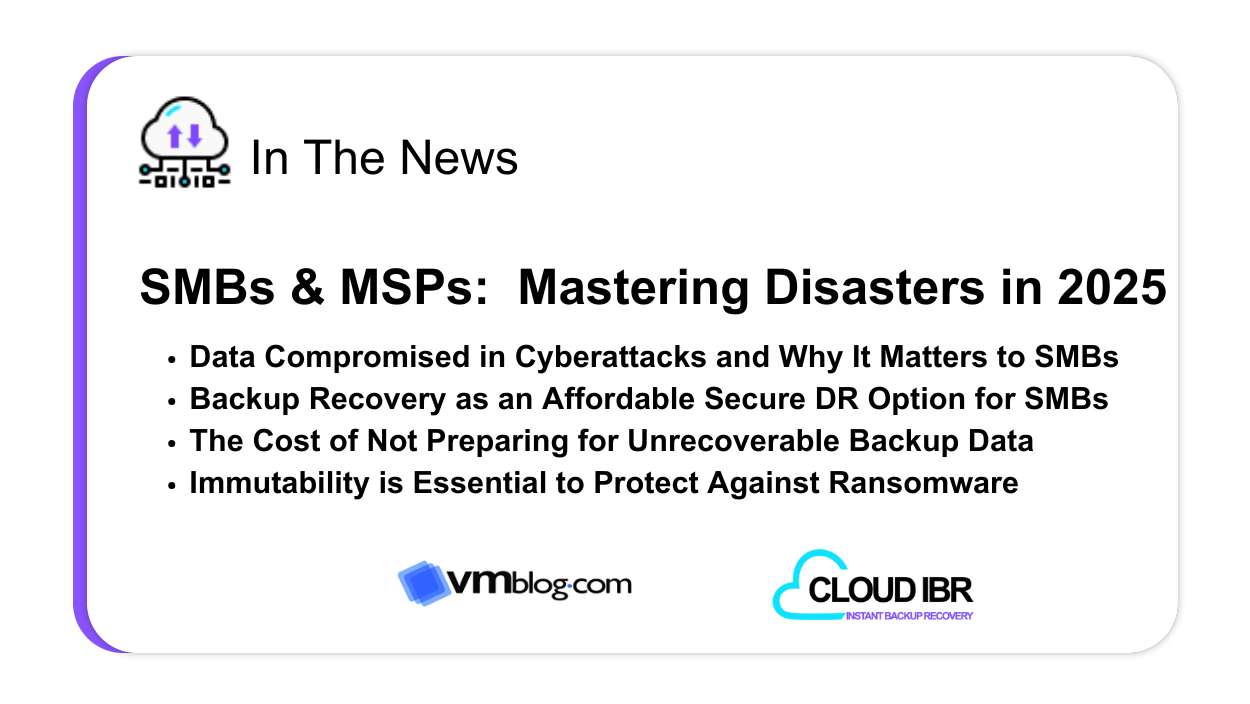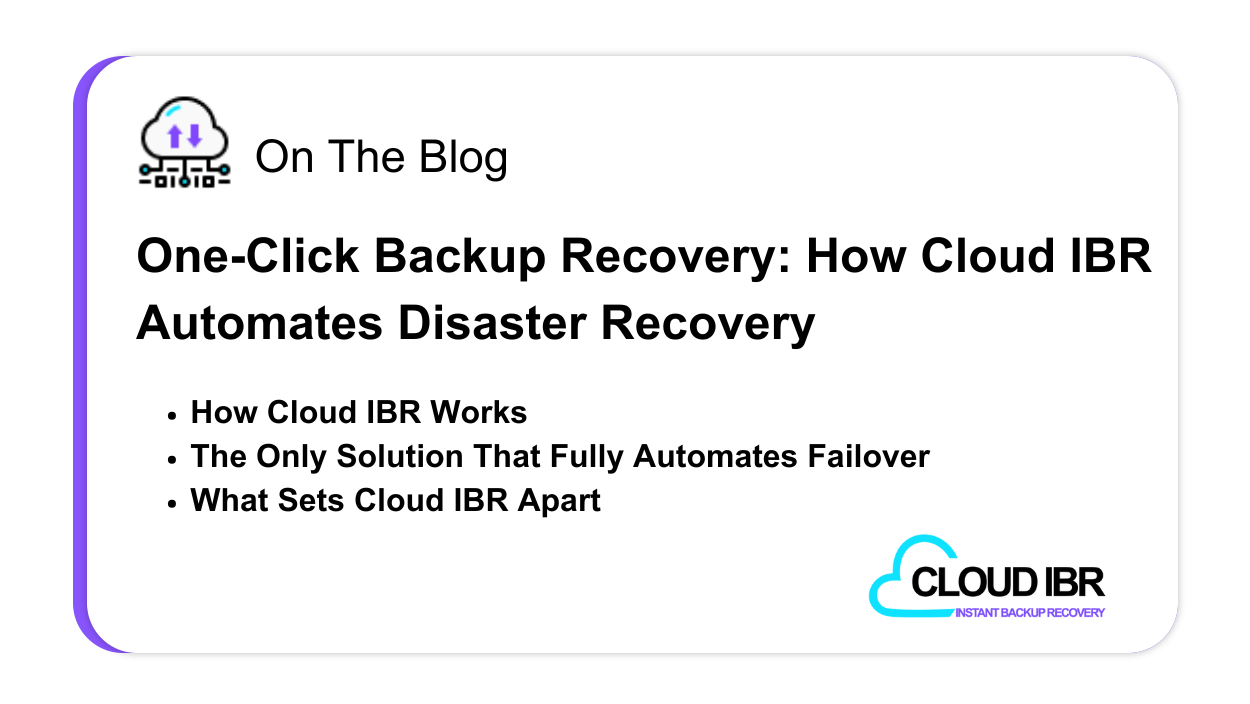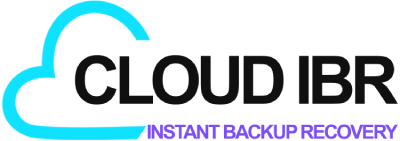With new technologies becoming increasingly accessible, data quickly becomes the backbone of many small businesses’ daily operations. Though these powerful tools and the information they provide bring many advantages to small business owners, they come with an inherent risk, data protection. What if there is a disaster like a fire or power surge? What happens if this data is lost? What will it cost to rebuild, or recover?
The answer is something most businesses don’t want to find out. At least not in practice. Without a disaster recovery plan in place, the disruption can cause a steep loss in revenue, customers, and permanent damage to reputation.
The 3-2-1-1-0 Rule: Backup’s Role In Disaster Recovery

The first step to being able to recover data is to have it backed up and in multiple places. The 3-2-1-1-0 rule is an update to the widely referenced 3-2-1 backup strategy where businesses should have 3 copies of their data. The first is the original copy and the second two are backups, plus immutability and backup testing validation for a secure business continuity/disaster recovery plan.
This strategy also requires that the copies be stored on two different types of media, like an external hard drive, or cloud storage. Lastly, one of the copies must be off site so in the event of a natural disaster, it is recoverable.
- Three Data Copies: Maintain three copies of your data to align with traditional backup strategies.
- Two Media Types: Use two different types of media for redundancy, including cloud storage options like snapshots on volumes and backups on object storage.
- Offsite Storage: Keep one data copy offsite, which can be easily managed through cloud backup solutions, such as using a different availability zone, region, or cloud provider.
- Offline, Air-gapped, or Immutable Copy: Ensure one copy is either offline, air-gapped, or immutable. This is crucial for ransomware protection, as these copies provide an extra layer of security.
- Validated Backups with Automated DR Testing Verification: Use Cloud IBR automated DR testing to confirm that your backups are valid and backed up as expected.
The addition of an offline, air-gapped, or immutable copy is vital for resilience against ransomware or a disaster event. In some cases, a backup can have multiple protective features, like write once read many (WORM) tape media – which are “ultra-resilient” data copies. Cloud IBR brings validation and useable value to the data in your immutable backups by proving and ensuring recovery with automated testing and disaster recovery.
Best Cloud Backup Providers for Small Businesses
Backblaze B2
Backblaze B2 is known for its affordability making it an excellent option for small businesses on a budget. It boasts a user interface and easy setup for quick and efficient data protection. While it may lack some features found in more comprehensive solutions, its affordability and reliable performance make it a dependable choice for basic cloud backup requirements.
Wasabi Object Storage
Wasabi Object Storage offers flat rate pricing without egress fees ensuring predictable budgeting for small businesses. Renowned for its performance and reliability, Wasabi guarantees data durability and low latency. With setup and integration capabilities Wasabi is a practical choice for businesses seeking cost-effectiveness without compromising on data security.
Veeam
Veeam offers a solution tailored for businesses providing functions, like backup, replication and disaster recovery for virtual, physical and cloud workloads. While it may come at a price, Veeam has many options and smoothly connects with private cloud service providers and cloud storage services such as AWS, Azure and Google Cloud making it a flexible option for companies in need of data security measures.
From Backup To Recovery
Having data backed only gets you halfway to having a solid disaster recovery plan. Backup and disaster recovery are not the same, and there are many differences between the two. While backups ensure your data is stored, disaster recovery focuses on how that data is organized, accessed, and shared between platforms. Think about it like having a filing cabinet with all the important information, but nothing is organized. If someone were to call it would take you a while to find the information you need. Likewise, your website and the software you run require data to be packaged in a specific manner.
More than having the data stored you need to have a means of reverse engineering the pathways and infrastructure to get your applications running again. That is where cloud backup disaster recovery as a service comes in.
For a low monthly subscription, backup disaster recovery providers offer on-demand bare metal cloud servers and storage infrastructure so you can stand up applications and recover quickly. You only pay for hosting fees upon use making this OPEX option ultra-affordable while leaving you protected when you need it.
One-Click Backup Disaster Recovery
Get Disaster Recovery without complexity or an enterprise-level budget.
Cloud IBR is a simple, cost-effective, and fully automated Backup Recovery SaaS platform for your immutable Veeam backups stored in Backblaze B2 or Wasabi Object Storage.
How It Works:
- One-Click Deployment: Bare metal cloud servers are deployed instantly during a failover event.
- Automated Backup Import: Recovers Veeam backups stored in object storage or managed by Veeam Cloud Service Providers.
- Immediate Failover: Delivers a fully functional bare metal infrastructure environment with uninterrupted performance.
- Seamless Managed Failback (Platinum Plus): Synchronizes changes and transitions operations back to the production environment.
Related Posts

SMBs and MSPs: Mastering Disasters in 2025
As businesses continue to struggle with escalating cyber threats and natural disasters, small and medium-sized businesses (SMBs) and managed service providers (MSPs) face on-going challenges in data protection and disaster

One-Click Backup Recovery: How Cloud IBR Automates Disaster Recovery
When disaster strikes, data recovery should be instant, not a slow, manual process. Yet, many businesses still rely on outdated disaster recovery (DR) solutions that require extensive configurations, manual intervention,

Lower Cyber-Insurance Premiums with One-Click DR Testing
Why Insurers Keep Raising the Bar Cyber‑insurance premiums more than doubled in key markets as ransomware surged, and businesses grew more reliant on digital infrastructure during the shift to remote
